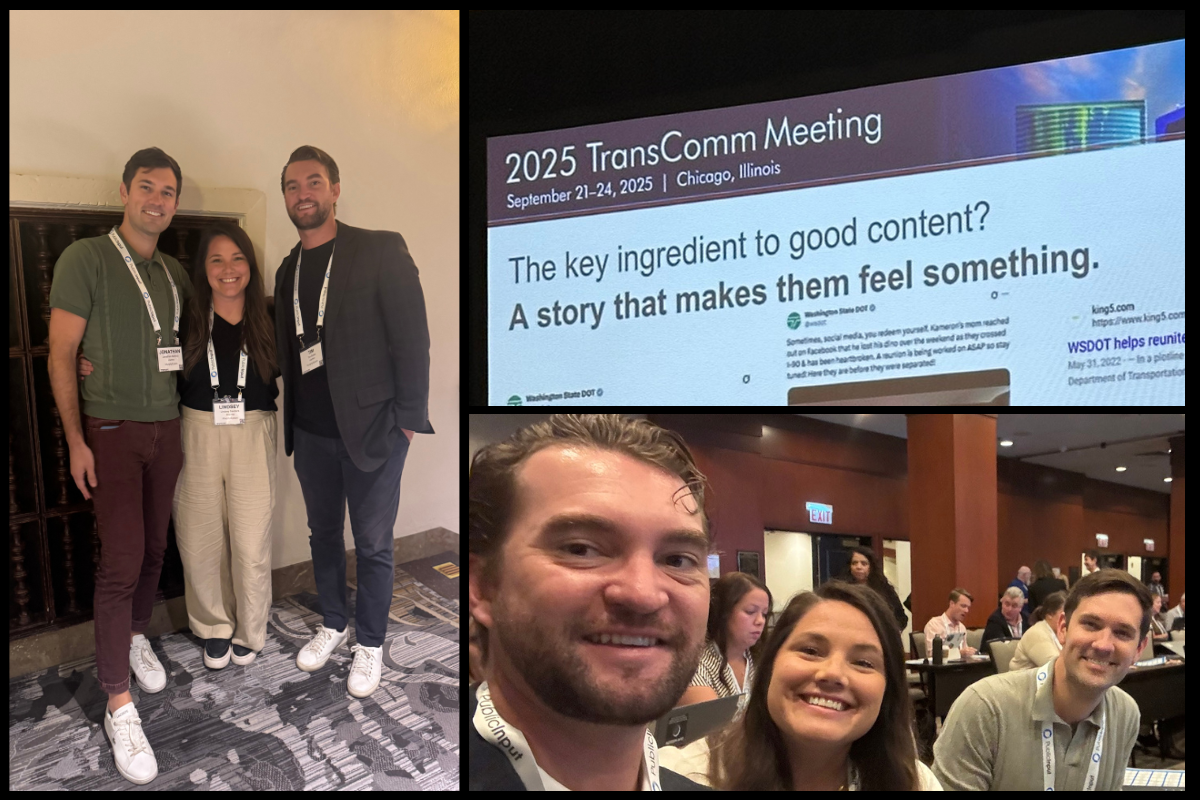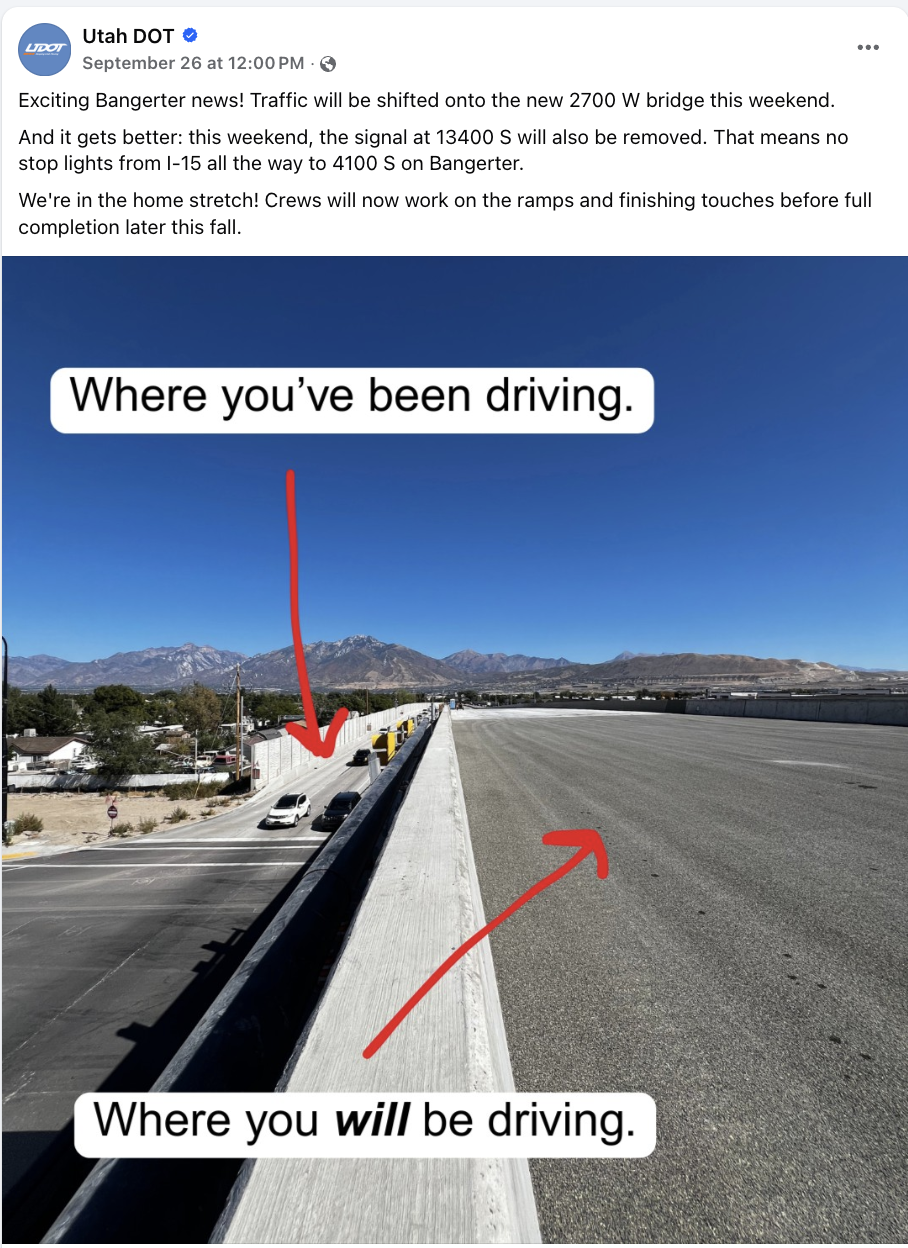
The term “government communication” can have a negative connotation: technical, formal and often ignored. But at this year’s AASHTO (American Association of State Highway and Transportation Officials) Committee on Transportation Communications (TransComm) meeting in Chicago, we saw a different story unfolding. Across the country, state departments of transportation (DOTs) are proving that the government doesn’t have to be boring – in fact, it can be human, engaging and even innovative.
Two examples we witnessed were Utah and Washington DOTs. Both are embracing storytelling through video, leaning into creative social strategies and exploring AI to reach audiences that traditionally tune out official messages. Instead of relying on top-down announcements, successful transit agencies are creating approachable, authentic content that feels like it belongs in your feed. They’re moving from “informing” to “inviting,” and the payoff is clear – people are actually paying attention.


At MurphyEpson, that’s exactly where we get involved. We’ve built our reputation on helping clients – especially in the transportation and public sectors – connect complex information to real people in ways that resonate. Whether it’s with public partners like the Ohio Department of Transportation or private partners across Central Ohio and beyond, we believe communications should move beyond jargon and spark trust, curiosity and – often most importantly – participation. We translate the technical into the tangible.
We turn policy into story. And we help agencies design conversations that people want to join.
We attended TransComm to listen, learn and share ideas. We wanted to better understand how DOT communicators across the country are adapting to challenges, including growing skepticism, rapid changes in technology and threats to funding. As consultants, it was refreshing to step into a space where peers from almost every other state are wrestling with the same questions we hear in our own projects: How do you reach audiences who don’t think government messages are for them? How do you cut through the noise of today’s information overload?
Our goal was to bring those lessons home to Ohio and the communities we serve.
Here are a few:
Innovation works when it feels human.
Tools like video and AI only succeed when they make information relatable, safe and secure. They must also align with the core goals of the agency, not just ride the latest trend.
Consistency matters.
The agencies standing out aren’t just experimenting; they’re embedding fresh approaches into their everyday strategies and making innovation a priority. It’s not about a one-off campaign; it's about building a new culture of communication.
Listening is part of leading.
By focusing on learning, we built stronger, more authentic connections at TransComm – the same kind we strive to build with our clients. The most effective communicators we saw weren’t the loudest voices in the room (or even the ones with the most resources). They were the ones who knew how to step back, strategize and commit to hearing their communities first.
Transportation projects succeed when communities understand and trust them. That means communication can’t be an afterthought. It’s as vital as engineering and design. And TransComm reminded us that government agencies that speak like people, not institutions, are the ones shaping the future of public trust. At MurphyEpson, we’re proud to help make that shift possible – one project, one story, one community at a time.
